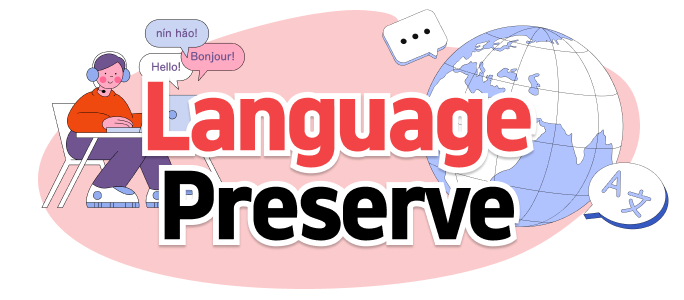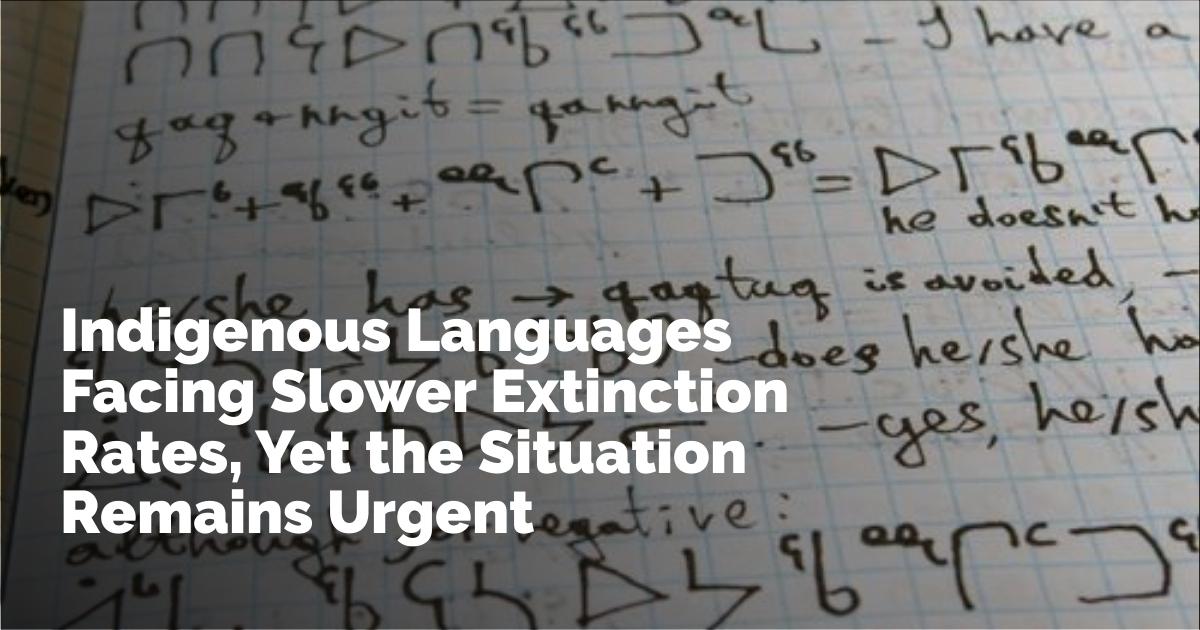The Endangerment of Indigenous Languages: A Slow Yet Alarming Decline
The pace at which Indigenous languages are disappearing is slower than expected, but this does not detract from the urgency of the crisis. While the total number of Indigenous language speakers remains relatively stable, the speakers of specific languages are dwindling at an alarming rate. Understanding the dynamics of this decline requires a detailed examination of the projections and the challenges involved in preserving these linguistic heritages.
Global Context and Studies on Indigenous Languages
According to the United Nations, on average, two Indigenous languages vanish every month on a global scale. Additionally, an estimated 40% of world languages, primarily Indigenous, are threatened with long-term extinction. Given this alarming situation, the United Nations declared 2022-2032 as the International Decade of Indigenous Languages. The hope is that this initiative will raise awareness and galvanize policymakers into action.
Michaël Boissonneault, a professor from the Université de Montréal’s Department of Demography and Population Sciences, has turned his attention toward the vitality of Indigenous languages in Canada. Much of the existing research comes from linguists, but they often lack the methodological tools to predict the trajectories of language-speaking populations. Boissonneault believes that demographic projections can provide valuable insights into this issue.
Demographic Research and Prediction: The Component Method
To forecast the state of Indigenous languages in Canada by the year 2101, Boissonneault and his research team employed the component method. This method considers factors like mortality, fertility, and migration within Indigenous populations. Their findings, published in the Royal Society Open Science journal, shed light on possible future trends for these languages.
Despite the advantageous detail of Canadian census data, the researchers faced hurdles. Many Indigenous languages in Canada are spoken by very small communities—sometimes as small as 100 individuals. Therefore, the component method had to be adapted for such small-scale populations. In practice, some languages were grouped together to ensure a more accurate projection of 27 language categories: 21 individual languages and 6 groups. This approach depended on multiple Canadian census datasets spanning from 2001 to 2021, although typically, such projections use a single reference year. Boissonneault emphasizes that the study aims to demonstrate the potential of demographic projections for Indigenous languages and is not intended to be a definitive forecast.
Reduction in Indigenous Language Populations
The projections align with specialist predictions, indicating a marked reduction in speakers of certain Indigenous languages while the overall number of Indigenous language speakers in Canada has remained relatively stable. This pattern emerges because while some languages rapidly lose speakers, other, more commonly spoken languages, gain speakers.
For instance, the projections suggest that the number of Inuktitut and Atikamekw speakers could double by 2101. In contrast, at least 16 other languages might see a decline of 90% or more in their speaker populations during the same period. This situation is particularly dire in Western Canada, where many languages have very few speakers, placing them in a precarious position. The historical and political contexts in these regions significantly affect language vitality, with some languages historically declining faster due to regional differences.
Conversely, many languages in Eastern Canada have already vanished due to different colonial histories and linguistic developments.
A Slower-Than-Expected Decline
An encouraging finding from the research is that the decline in Indigenous language speakers is not happening as swiftly as previously feared. This finding was surprising, especially to the linguist partnering with Boissonneault, whose field observations suggested a more rapid decline.
However, the projections did not account for potential language revitalization efforts or other external influences that might affect language transmission. Boissonneault acknowledges that the model used in the study is basic, owing to the small size of sub-populations, and there is potential for advancing it to include more variables such as urbanization, which has significant implications for language preservation.
Looking forward, Boissonneault hopes to refine the model and apply demographic projections to all 70 Indigenous languages in Canada. He believes that this diversity represents a valuable cultural heritage that demands preservation.
Conclusion: The Path Forward
The preservation of Indigenous languages in Canada faces a number of challenges, from demographic factors to historical trajectories and revitalization efforts. While some languages might see growth, others are at risk of extinction. Each language's fate will depend not only on demographic trends but also on concerted efforts to preserve and revitalize them within their communities. Despite positive finds that the decline isn't as rapid as once thought, the need to act remains urgent. Continued research and collaboration among linguists, demographers, and Indigenous communities are essential in ensuring that these languages and the cultural heritage they carry, endure for future generations.
출처 : Original Source

